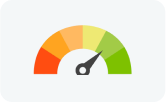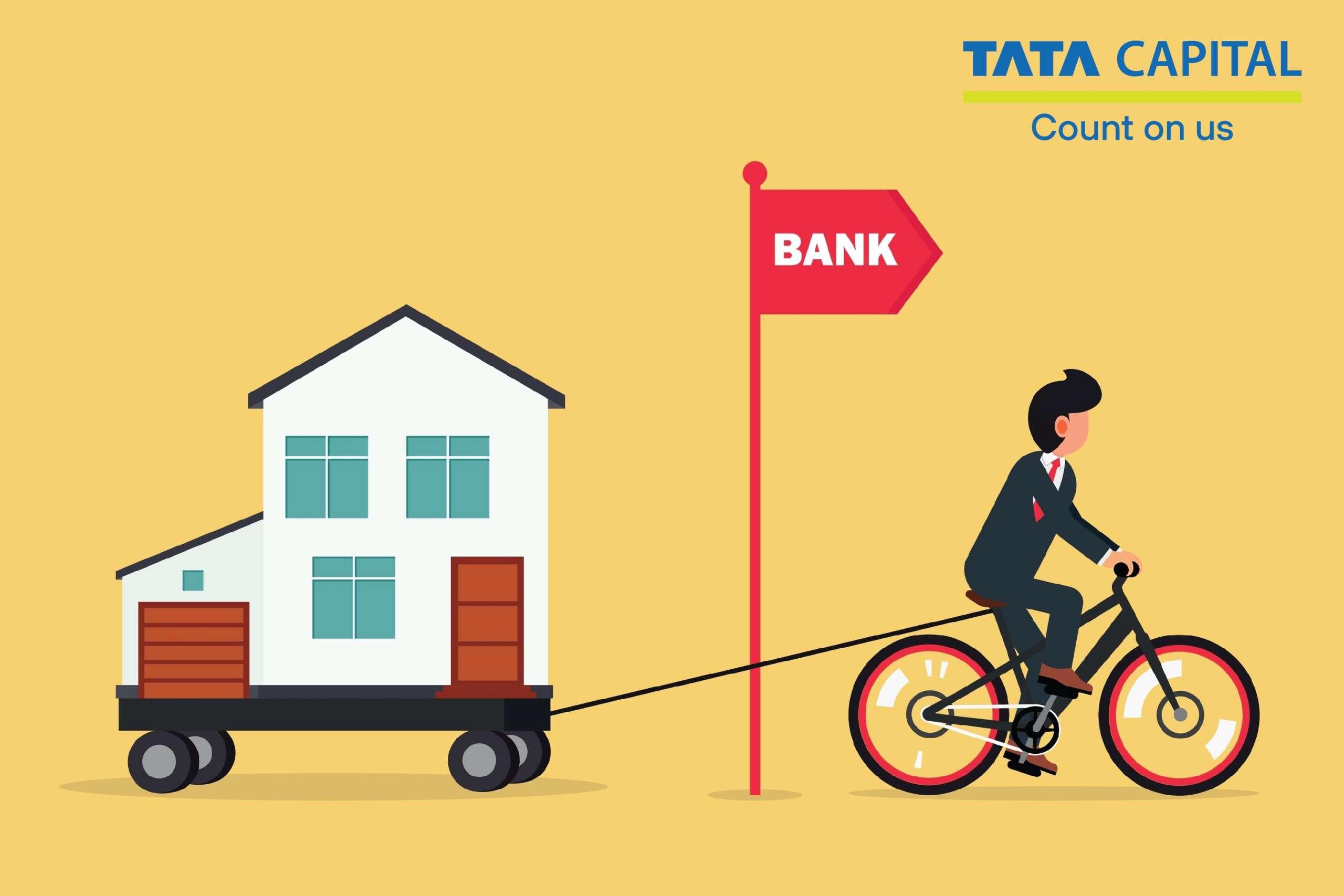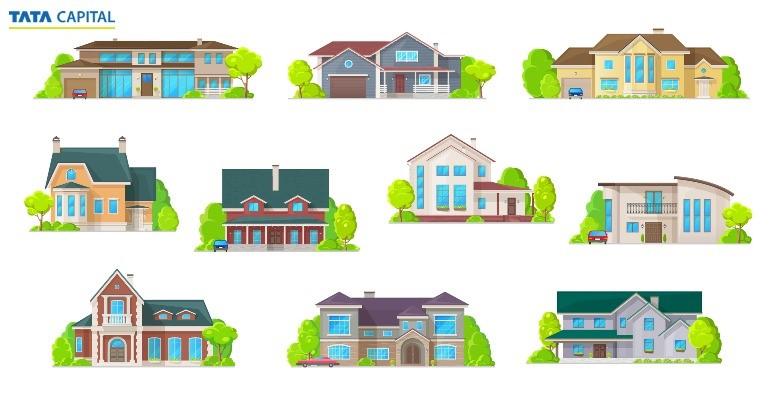Managing your home loan effectively can make a big difference to your long-term finances. If you feel like your current loan’s interest rate is too high or the EMIs are weighing you down, refinancing might help ease that burden.
Many borrowers choose to refinance mortgage as a way to align their debt obligation with their financial goals. Mortgage refinancing means replacing your existing home loan with a new one, which can be from the same lender or a different one, to secure better terms. This approach can help reduce your monthly EMIs and lower the total interest outgo.
But before you make the switch, it’s important to understand how mortgage refinancing works.
What Is Mortgage Refinancing?
Mortgage refinancing refers to the process of transferring your current home loan to a new lender or renegotiating terms with your existing lender, typically to get better interest rates or improved loan conditions.
This can be done for various reasons:
- Lower Interest Rates: If interest rates have dropped since you took your loan, refinancing can help you secure a lower home loan interest rate, ultimately reducing your EMI burden.
- Better Loan Terms: Some borrowers may wish to switch from a fixed to a floating rate (or vice versa) or change the loan tenure. In such cases, they can choose to refinance mortgage and plan their finances better.
- Top-Up Loan: Some lenders allow you to refinance and borrow an additional amount over your existing loan, using your home equity as leverage.
Say, you took a Rs. 50 lakh home loan five years ago at 9.5% interest. Now, another lender is offering 8.5%. By refinancing, you could reduce your EMI and overall interest outgo significantly over the remaining tenure.
The process usually involves a fresh loan application, credit evaluation, property revaluation, and some basic paperwork. Lenders may charge a processing fee, but the savings over time often outweigh these initial costs.
For those looking to refinance mortgage in India, it’s wise to compare offers, use online EMI calculators, and read the fine print before making a move. Refinancing goes beyond securing lower interest rates. A home loan refinancing can help you align your debt with your long-term goals.
The Process of Applying for Mortgage Refinancing
Refinancing your home loan can be a smart financial move if you’re looking to reduce EMIs, switch lenders, or access better terms. Here’s how the process works:
1. Evaluate your existing loan
Evaluate the terms and conditions of your existing loan. Before deciding to go in for refinancing, use a home loan calculator to determine if the switch would be beneficial.
2. Research and compare your options
Begin by comparing mortgage refinancing offers from various lenders. Use a home loan EMI calculator to estimate your revised monthly instalments based on different loan amounts and tenures.
Visit several lenders online or physically to understand which loan terms and conditions would prove the most feasible for you. Once you choose a lender, you can start the application either online or by visiting a nearby branch. The lender will evaluate your financial profile, just like your original home loan process.
3. Documentation
When applying to refinance your loan, be ready to share the following documents required for home loan processing:
- Identity and address proof (Aadhaar, PAN, Passport)
- Income proof (latest salary slips/Form 16)
- 3 years’ Income Tax Returns
- Latest bank statements (3–6 months)
- Property documents
Tata Capital ensures a transparent and streamlined process to help you save time and effort during documentation.
4. Underwriting and property appraisal
After receiving your application, the lender starts underwriting. This includes verifying the documents, assessing your creditworthiness, and reviewing property details such as purchase date and legal status.
An independent appraisal is conducted to estimate your property’s current market value, which is crucial for loan approval.
5. Close the existing home loan
Once appraisal and underwriting are complete, you can initiate closure of your existing loan. The previous lender will issue a loan closure statement, and you will receive a closing disclosure outlining the final details.
After the assessment is done, the lender shall approve the loan.
Tata Capital offers a fast and smooth home loan application process, ensuring minimal delays and quick disbursals.
Benefits of Mortgage Refinancing
1. Lower Rate of Interest
One of the primary reasons people opt for mortgage refinance is to take advantage of lower interest rates. Borrowers may have secured the initial loan on a rate of interest higher than prevailing rates. Even a small percentage reduction in your current rate can lead to substantial savings over the loan tenure. A lower rate means lower EMIs, which improves monthly cash flow and makes loan repayment more manageable.
2. Reduced EMI Burden
Refinancing allows you to lower your home loan EMI by either extending your loan tenure or securing a better interest rate. Lower EMIs can free up funds for other expenses such as education, wedding, or home renovations, providing better control over your finances.
3. Switch from Floating to Fixed Rate (or Vice Versa)
Depending on your financial outlook and market conditions, you might want to switch your interest type. If you’re currently on a floating rate and expect rates to rise, switching to a fixed rate can give you stability. On the other hand, if rates are expected to fall, switching from fixed to floating can help you save.
4. Change in Loan Tenure
Refinancing gives you the flexibility to increase or decrease your home loan tenure based on your current financial needs. If a borrower with a loan duration of 20 years can afford to pay higher EMIs as a result of a change in their income, they can opt for a shorter tenure and reduce their overall interest outgo. On the other hand, a borrower who is unable to afford their monthly EMIs can extend their tenure to ease their financial burden.
5. Top-Up Loan Facility
Many lenders, including Tata Capital, offer the option of a top-up loan during refinancing. This allows you to borrow additional funds over your existing loan, which can be used for personal or professional needs.
6. Improved Loan Terms and Services
Refinancing gives you the opportunity to shift to a lender with better customer service, flexible repayment options, or digital services. This can make your overall experience smoother and more convenient. Tata Capital offers home loans with a seamless online application process, minimal documentation, and instant provisional sanction.
Cons of Mortgage Refinancing
While mortgage refinancing offers multiple benefits like reduced EMIs, better interest rates, and improved loan terms, it’s important to consider the potential downsides before making a decision:
1. Processing and Switching Costs
Refinancing involves charges such as processing fees, administrative charges, legal fees, and valuation costs. Some lenders also impose prepayment penalties on the existing loan. Though the long-term savings may outweigh these costs, it’s essential to calculate them carefully before making the switch.
2. Lengthened Loan Tenure
While extending your loan tenure lowers EMIs, it also increases your overall interest outgo. You might end up paying more over the long run, even if the monthly payments seem affordable. Borrowers must use a home loan EMI calculator to compare scenarios and make an informed choice.
3. Rejection Risk
Just like your original home loan, a refinance application requires you to meet the lender’s eligibility criteria. Your credit score, repayment history, income stability, and existing liabilities are re-evaluated. If your financial profile has changed negatively, the new lender may reject your application.
4. Time-Consuming Process
Refinancing a mortgage is involves documentation, credit checks, property valuation, and legal verification. All of these processes are similar to applying for a fresh home loan. This can take time and effort, especially if you’re switching to a new lender.
5. Impact on Credit Score
Applying for mortgage refinance can temporarily impact your credit score due to hard enquiries made by lenders. While not a major concern if you have a strong profile, it’s something borrowers should keep in mind if they plan to apply for other loans soon.
Tips for Choosing a Refinancing Package
- Beware of toxic mortgage charges like arranger fees, insurance charges etc., since these cost items can eat up the interest savings from the refinancing deal.
- Select the right financier by checking their rating with the rating agencies, various filings on the RBI websites etc.
- Always be updated on all the economic news and announcements from the RBI concerning the rates of interest through its Monetary Policy review meetings to refinance home loan. This would help to compare and evaluate the home refinance rates to decide on whether to go with the refinance option or not.
Conclusion
Mortgage refinancing involves more than just lowering your EMIs. It’s about realigning your loan with your current financial goals. Whether you’re looking for lower home loan interest rates, a more flexible repayment tenure, or additional funds through a top-up loan, refinancing offers a practical solution. However, it’s important to evaluate both the benefits and the costs involved before making a decision.
Tata Capital makes this process smooth and customer-friendly. With competitive rates, a transparent fee structure, minimal documentation, and the option to apply online, Tata Capital ensures that your refinancing journey is simple and stress-free.
Visit us today if you’re ready to switch to better terms. Apply now for a mortgage refinance with Tata Capital and take a step closer to smarter financial planning.
FAQs
To increase home loan eligibility, maintain a good credit score, clear existing debts, show stable income, apply with a co-applicant, and opt for a longer tenure to lower EMIs.
Mortgage refinancing works by replacing your existing home loan with a new one, often at better interest rates or terms. It involves applying afresh, document verification, property revaluation, and loan disbursal.
The amount to refinance mortgage usually depends on the value of the property, existing loan balance, credit score, and income.
You should refinance your home loan to lower interest rates, reduce EMIs, change loan tenure, switch lenders, or avail a top-up loan. Ultimately, a refinancing can help you better manage finances.
Most lenders ask for proof of identity, proof of income and property related documents for home loan mortgage refinance loan.
You can use an EMI calculator to determine the new EMI structure for home loan refinancing.


 8 mins read
8 mins read

 Previous Post
Previous Post













